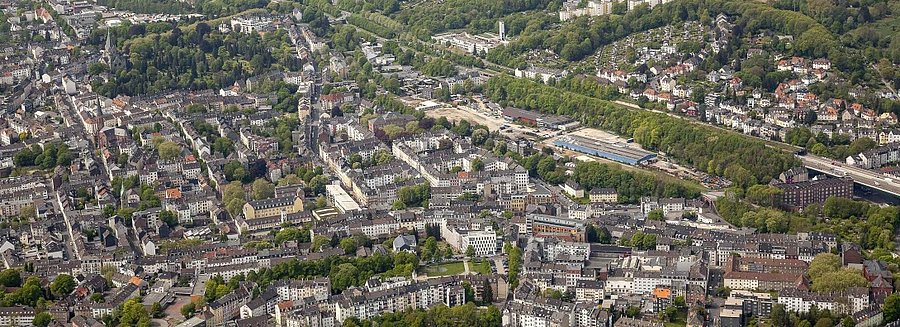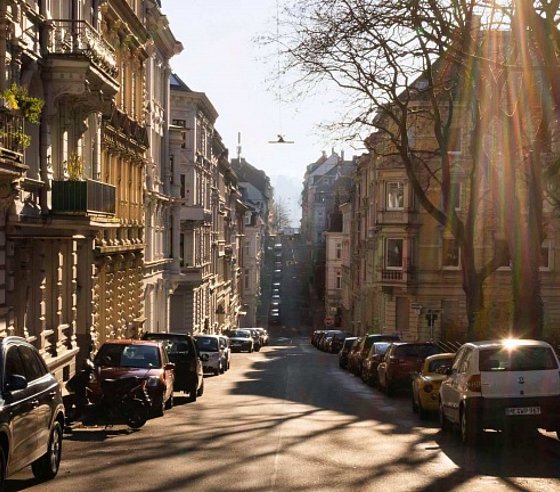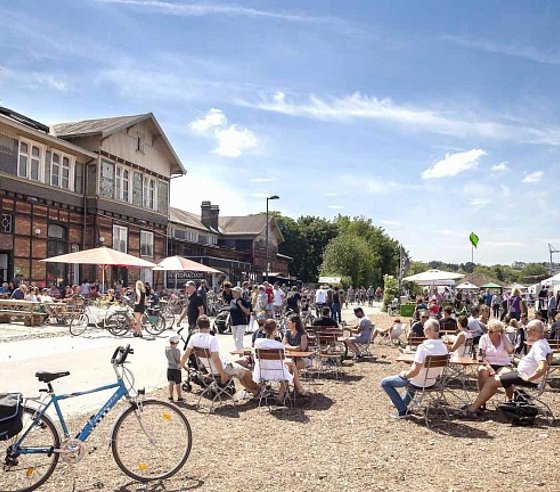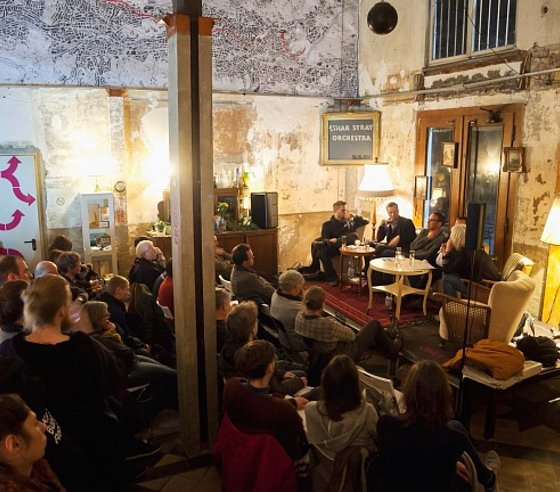Mirke District
About 8,600 people live in Mirke district, which is centrally located in the neighbourhood of Elberfeld. ‘Mirke’, as the district is called by the locals, was the main stage of the Solar Decathlon Europe 21/22 (SDE 21/22).

© Wolf Sondermann
Mirror of urban reality
Mirke district is characterised by a divergent demographic structure. Compared to the overall city average, the mean age is lower (under 25s: 30% vs. 25%), but immigration (57.1% vs. 38.8%) and unemployment rates are higher (9.9% vs. 6.5%, City of Wuppertal, 2019).
Comparatively low rents mean that the area remains affordable and provides space for various ways of life. Indeed, large parts of Mirke district’s population are students and creatives. Mirke district has great potential for urban development. It mainly features typical Wilhelminian-style (Gründerzeit) buildings from the early twentieth-century, as well as post-war buildings from the 1950s and 1960s.
Similar to other German neighbourhoods, residential buildings are largely owned by private landlords. Due to this fragmented ownership structure, the state of individual buildings varies immensely. Furthermore, this complicates investments for the improvement of building energy performance and refinancing.
In short: Mirke district features many attributes that make urban transformation difficult and is therefore representative of many urban neighbourhoods in Germany and Europe. It offers the SDE 21/22 teams ideal conditions to develop concrete solutions for the urban and socio-economic challenges associated with urban energy transition.

Neue Nordstraße, Mirker Quartier © SDE 21/22

Mirker Bahnhof, Nordbahntrasse © Wolf Sondermann

Utopiastadt © Wolf Sondermann
Creative urban development
At the same time, Mirke district is a prime example of outstanding bottom-up transformation. The district has long been considered a deprived area, e.g. due to many buildings being in poor conditionor being unoccupied. In the last few years however, it has experienced a revival, mainly as a result of efforts from local artists, as well as from social and charitable organisations.
Today, Mirke district is home to a range of social and cultural institutions that are not only locally known, but also appreciated beyond the region of Wuppertal. Its active civil society provides ideal conditions for the educational and empowerment activities that we organised together with local partners as part of the SDE 21/22.
The majority of the transformative energies that characterise the district today have been fuelled by the initiative Utopiastadt (Utopia City) which was founded in 2011. Utopiastadt runs Mirker Bahnhof, an abandoned railway station that has been out of service since 1996. The Mirker Bahnhof building and its surrounding area have become the heart of creative cultural and socio-ecological urban development.
